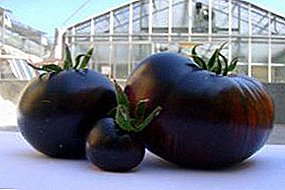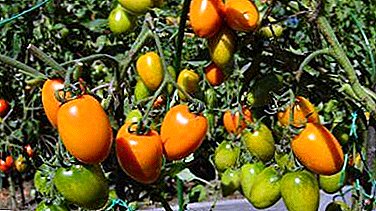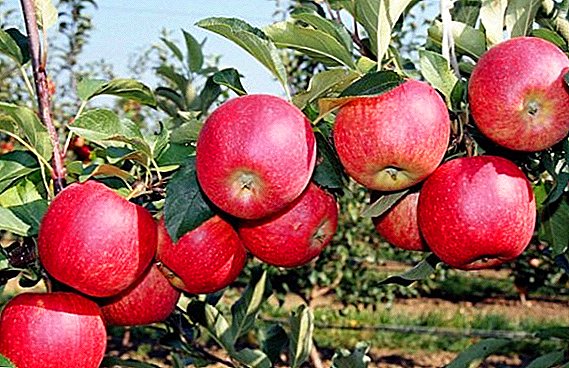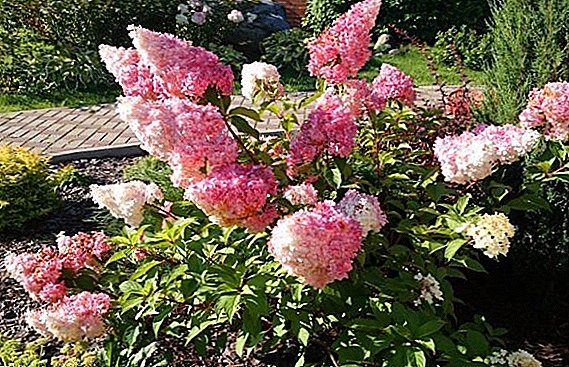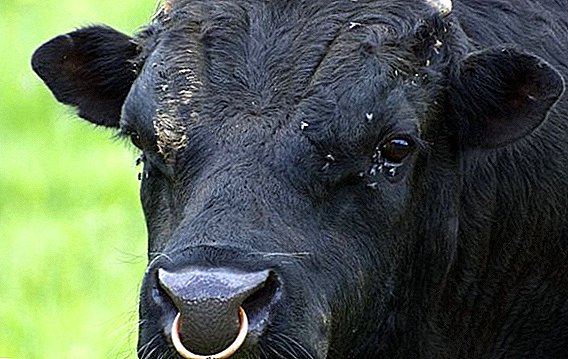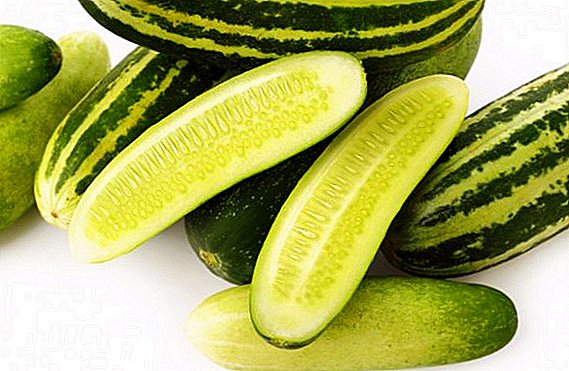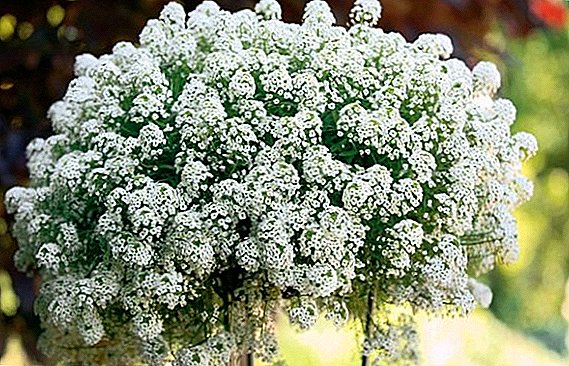 Among ornamental plants, sea lobularia is especially loved by gardeners. In addition to the pleasant appearance, this plant is distinguished by its honey aroma, and thanks to its unpretentiousness, its flowers delight those around it to the very frost.
Among ornamental plants, sea lobularia is especially loved by gardeners. In addition to the pleasant appearance, this plant is distinguished by its honey aroma, and thanks to its unpretentiousness, its flowers delight those around it to the very frost.
Botanical description
Marine lobularia (Lobularia maritima), or otherwise called alissum marine, is one of the species of the Lobularia genus and belongs to the Cabbage family.
You can still hear the popular names: burachok, lawn, stone - is all one and the same plant, it has no lack of popularity. The origin is Mediterranean, but the species is widely naturalized in areas with a cooler climate. 
Iberis, Eastern sverbig, colza, quatran, arabis - are biological relatives of lobularia.
This plant is grown as annuals. The height of the shoot - up to 20 cm, strongly branched stems form fluffy bushes. Small flowers, up to 5 mm in diameter, are collected in beautiful fragrant racemes of a wide variety of colors: white, purple, pink, etc.
Flowering begins in late spring or early summer, but with prolonged heat flowering may stop. But this is not the complete end of the process, after cutting the inflorescences, closer to autumn, the second wave of flowering begins, which continues until the autumn frosts.
Conditions for an unpretentious beauty
Lobularia is undemanding to the care of a flower, its planting and cultivation in the open field do not represent special difficulties for the gardener.
In addition, the flower is resistant to adverse conditions - there are photos of a flowering plant in a snow-drenched garden. Indeed, it is able to withstand temperatures up to -3 ° C for several days and continue to bloom after warming. 
Lighting and location
This flower loves light, so it is quietly planted in the open sun. Often used to decorate the foreground of the flower bed, decorated with balconies and verandas, grown in rock gardens and rockeries.
The best place for lobularia is a well-lit warm area. Accordingly, damp and cool places for its landing should be avoided. In the penumbra, the plant feels good, but the number of inflorescences decreases.
Important! You should always consider the possibility of cross-pollination of lobularia, so its various varieties are planted separately, at a distance of at least 200 meters from each other to avoid mixing.

Soil selection
It is recommended to choose the soil for planting with a weakly acid or weakly alkaline reaction, but this does not really matter. The main thing is that the soil was not waterlogged and there was no possibility of stagnation of water in it (that is, the soil should be well drained).
Growing from seed
The process of growing lobularia from seeds is simple. Possible as planting seeds in open ground, and the preliminary germination of seedlings at home. The seeds themselves do not need special care during storage. It is important to know when to sow seeds or plant seedlings.
Your garden will be beautifully decorated with such annual flowers as clarkia, heliotrope, forget-me-not, rudbeckia, helianthemum, nasturtium, dahlia, coreopsis, marigolds, snapdragon, ageratum.
Direct seeding
After flowering lobularia fruits are formed - these are oval-shaped pods with sharp tops. The seeds are very small and of different colors, depending on the type of plant. In purple lobularia seeds range from orange to brown tones. White has yellow seeds.
Seeds should be harvested only after the pods turn yellow. The collected seeds do not lose their properties for up to three years and all this time are excellent planting material.
Planted lobaria recommended in the spring with a stable warm air temperature (late April - May) or late autumn, but before the first snow (mid-October). To sow the seeds should be in the open excavated soil on which you can pre-sprinkle calcium flour to feed the plant. They are sown evenly over the entire area under cultivation, and then gently, with a hand, tamp them slightly.
Do not sprinkle sowing additional soil, as this will close it from sunlight and significantly slow down the process of seed germination. It is necessary to water a site evenly and accurately, without flooding crops.
After waiting for the first shoots, loburiya should be given for growth for another two weeks, then thin out. The distance between shoots should be about 15 cm - it stimulates the flower to grow, and also has a preventive effect against possible diseases.
Under favorable conditions, lobularia can multiply by self-sowing. But even in this case, every 2-3 years it is necessary to transplant plants.
Rassadny way
This method allows you to significantly speed up the flowering plants. To do this, planting material is sown in small boxes filled with drainage and loose soil.
After sowing, sow the seeds firmly with your palm, but do not press them too deep. Further sowing is necessary to pour and cover with a film or glass. Comfortable temperature conditions for plants 16-20 ° C.  Sprouts appear in about 7-10 days. After sprouting, the protective film should be removed. For normal growth, sprout loburiya need to create additional lighting. In May, sprouted shoots are recommended to take out into the open air - this contributes to the hardening of seedlings.
Sprouts appear in about 7-10 days. After sprouting, the protective film should be removed. For normal growth, sprout loburiya need to create additional lighting. In May, sprouted shoots are recommended to take out into the open air - this contributes to the hardening of seedlings.
When three leaves appear on the stem of the plant, you should begin a dive, transplant seedlings. Individual specimens can be transplanted into pots or other areas.
In open ground lobularia planted in late spring. About two weeks before planting, the soil is recommended to fertilize with organic dressings. It is desirable to add sand and gravel to heavy clay soil.
The size of the pits should slightly exceed the size of the rhizome in order for the plant to feel comfortable in the new place. After planting the flowers should be plentifully watered.
Important! Lobularia fragrance is pleasant not only to people, it attracts numerous insects. In this case, the smell can cause an attack in people with allergies.

Do I need to care for lobularia?
Lobularia is a very unpretentious plant and does not require special conditions, but gardeners need to know about some of the nuances of growing this species.
For normal growth, the plant is planted on sufficiently moist nutrient soils. But it should be remembered that a surplus of humus will lead to a loss of flowering, as the plant will increase the green mass.
Did you know? It is assumed that the word "alissum" comes from the Latin "a lyssa", which means "devoid of dog rabies." There is a version that this name is associated with the use of this plant as a remedy in the distant past. Currently, alissum is not used as medicine.Lobularia refers to frost-resistant plants and does not need winter shelter, and also easily withstands seasonal reductions in air temperature. When flowering stops, lobularia bushes are cut, thus causing a second wave of flowering. At the same time, the plant stems are cut to 8 cm, not more.
The plant does not need additional watering, it is quite enough and natural precipitation, and an excess of water can lead to decay of the rhizome. But if drought occurs, the bushes should be watered, especially during the budding period. 
Did you know? Lobularia is used in traditional medicine. From its above-ground parts are made infusion, used for cough and cold.
Plant Diseases and Pests
Sick lobulariya-alissum rarely. Basically, the stems and inflorescences are affected by powdery mildew, viral mosaic, brown rot or jaundice of asters. To combat these diseases use fungicides.
Also, the plant can be chosen by natural enemies - cabbage moth, cross-shaped flea or bedchink. Insecticides are used to fight insects.
For gardeners loburia marine is of great interest. It is great for creating a variety of landscape compositions, decorating balconies and terraces.
The plant is unpretentious, resistant to diseases and pests. Beautiful appearance, the ability to bloom until late autumn and honey aroma were the reasons for the wide distribution of this flower.



